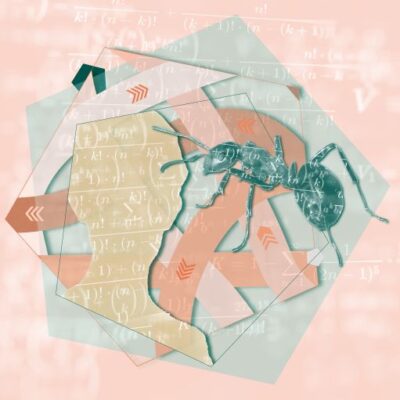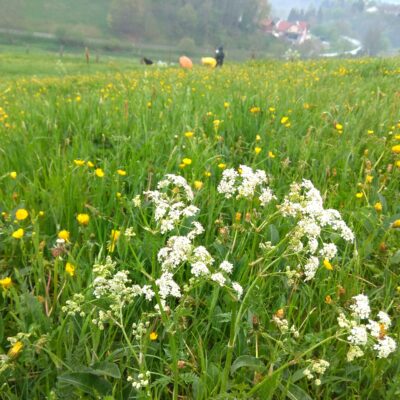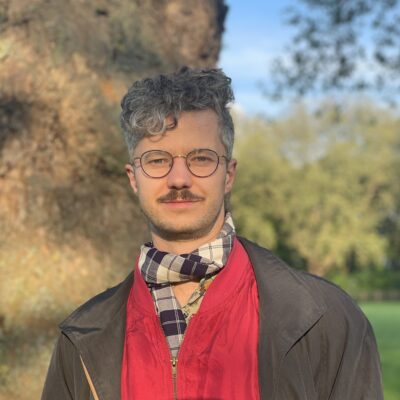University rankings, Nobel Prize awards, competitions – practices of comparing are all-pervasive, shaping the actions of actors in business, culture, science, and politics while playing a central role in the past and present alike. The Collaborative Research Centre “Practices of Comparing” (SFB 1288) investigates how things can be put in relation to each other in very different manners, along with the effects of this on historical processes of change. One example in this context is the emergence of “national literature”, focusing on German-speaking Switzerland, as the subject of the latest sub-project of the research network. The Centre for Interdisciplinary Research (ZiF) is hosting a conference related to the research this week. We have three questions for subproject leader Professor Dr Berenike Herrmann.
How is the national literature of German-speaking Switzerland special in light of practices of comparing?
Practices of comparing are at work every time we speak of national literature. This is not just about Goethe versus Shakespeare, but frequently involves the construction of pervasive and implicit ideas. National literature is a construct with a tradition. Our research project is called “Practices of comparing in the genesis, perpetuation, and transformation of ‘national literature’. The example of German-speaking Switzerland”. We pursue the question of how actors create national literature in historical change and how national literature influences change in turn. We focus on Swiss literature in the German language in the period of 1850 to 1950. Practices of comparing serve as a pivoting point in analysis. Once we speak of Swiss national literature, we compare it to national literature from countries such as Russia and Germany, at least in the period under consideration. In the 19th century, literature was a central means of conveying the idea of nationalism and its values to people. The example of German-speaking Switzerland is special since Switzerland not only is a multilingual country, but also a multicultural one. And yet, we are speaking of a uniform national literature even though some very different cultural practices of comparing are evident as a consequence of this.

© Bielefeld University/ Philipp Ottendoerfer
You are using algorithm-based analysis – how does this work in your project?
In our project, we place the practices of comparing on a large data basis, using digital corpus-based methods. In computational literary studies, we refer to a collection of texts as a corpus. The digital corpus we use in our project, however, does not comprise the literary texts as such. Rather, we focus on secondary literature and other cultural expressions that include, among other things, literary award speeches, cultural-politics speeches, and – forming the core of our project – literary histories. All of these items contribute to how the nation developed around 1900. Using digital methods, we address the questions of: How are people talking about national literature? How do they compare? What is being compared? What are the results? Is comparison happening implicitly or explicitly? We examine comparison types and formulate a classification scheme from them.
In this case, we are showing the patterns of ‘doing national literature’ by way of text mining. This means using algorithm-based analysis methods to reveal structures of meaning in texts. Not all of these structures and patterns are known to us yet. We want to train algorithms to identify practices of comparing in language, while at the same time striving to automatically record the degree of presence of an evaluating dimension in the language use. Digitally capturing archival materials gives us a large data volume to evaluate practices of comparing and to apply generalisations. We hope that the project breaks new ground in several areas. On the one hand, this is the first time that practices of comparing are being analysed in Swiss literary historiography. This includes other data from literary life and cultural politics as well. On the other hand, the comparison-theoretical reconstruction of national literature has never used computer-assisted methods before.

© Mor65_Mauro Piccardi/stock.adobe.com
What is the significance of practices of comparing for education?
The project strives to unravel a frequently ignored phenomenon that continues to be relevant to this day: People often think in national categories without questioning this. Opinions and even identities are created by practices of comparing, in literature as well for example in political language. However, creative comparison always retains a potential of questioning world views. Comparison works both ways: It can either lull or shake up. The set of methods I am developing together with postdoc Robin Martin Aust can also be used, among other things, to analyse social media. Generally, comparing as a human activity is important enough to be potentially included as a specific subject in school and university curricula: comparative analysis increases people’s critical awareness. We work on tools to help understand and ultimately contribute to today’s enlightenment, explaining how beliefs take root and how they can be creatively challenged.




